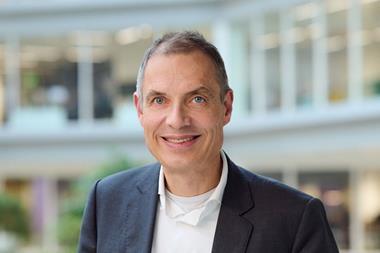Given the winds of change that have been blowing through the European pensions industry in recent years, it is not surprising that a main aim of Dutch pension funds when devising their information technology (IT) strategies is to ensure flexibility of their systems.
New regulation and evolving client requirements are driving funds to establish IT infrastructures that respond quickly to new business needs and practices. At the same time, there is a heightened awareness of costs, and a drive toward greater efficiency of systems.
Meanwhile, Dutch pension funds want their IT precisely tailored to their particular business requirements. If this means building their own systems, some larger funds are willing to do so, although the trend is to buy or rent software wherever possible.
ABP, the massive pension fund for Dutch government and educational workers, keeps all its business functions in-house. In terms of providing IT support for these functions, which include pension administration, investment and risk, and performance management, ABP has a policy of only building systems as a last resort.
“This means that building a system is only an option if we can’t reuse what we already have, or we cannot buy a suitable system from vendors,” says Henk Dado, head of ABP Concern Informations Systems, the IT department of ABP. For most of its core functions, ABP was not able to reuse existing software or find vendor systems that met its requirements, so it built its own systems for pension administration, customer relationship management, data collection and payments. This way it was able to create systems that met its policy requirements of having generic flexible systems that are responsive to customer events.
ABP is something of a rarity among pension funds today in keeping all its functions in-house and having the resources to build major systems, says Dick Snijders, former chief executive officer of Dutch Philips pension fund, and now senior adviser at Dutch pensions consultancy Akkermans and Partners. Many pension funds in the Netherlands, have outsourced at least their asset management, often accompanied by performance measurement, and are looking at what other business functions could follow, Snijders says.
In addition to its core systems built in-house, ABP has a number of applications from vendors, including California-based content management and compliance systems specialist FileNet, North Carolina-based data management and analytics specialist SAS, New Jersey-based portfolio management specialist Princeton Financial Systems, and Germany-based business systems specialist SAP.
In acquiring systems from vendors, ABP applies several criteria, such as how well the system meets the fund’s functionality requirements, the system’s price, the experience of other users with the system, the position of the vendor in Europe, the support it offers, the system’s technical infrastructure and the way that it fits into ABP’s IT architecture, explains Dado.
Dutch healthcare and social workers pension fund PGGM has recently rationalised its IT infrastructure with a standardisation on a Microsoft-based platform. Previously, the fund found that the diversity of its applications and their underlying technologies led to expensive maintenance and development. The greater standardisation is enabling more reuse of software, leading to greater efficiency and reduced costs.
“PGGM has a policy to create and maintain an IT environment to fulfil business requirements in all aspects such as flexibility, efficiency and effectiveness,” says Wim Walter, director of IT at PGGM.
Because the trend in pension funds is towards offering members greater flexibility and individual choice, there is a higher demand on IT systems, says Snijders. “Even if a_fund wants to run its systems in-house, it had better buy those systems from external vendors,” he says. The issues are quality of systems and costs – a fund will be hard-pressed to match the quality of development of an experienced vendor with many clients in the industry, and will have difficulty in keeping the costs of maintaining its proprietary system down to the level of a vendor’s more or less standardised system.
Mn Services provides pension administration, asset management and other services to Dutch pension funds, with its biggest client being the pension fund for Metalworking and Mechanical Engineering. Mn Services sums up its IT policy as aiming to create an IT infrastructure that is responsive to change, without incurring expenses that will drive the costs of its services to unacceptable levels.
“We try to make our IT systems as flexible as possible because we know things can change rapidly,” says Harald Wouters, spokesman for Mn Services.
In general, Mn Services does not outsource its core services. And in terms of buying or building systems, the organisation takes a pragmatic view, says Wouters – it will buy systems where they are available and meet the organisation’s requirements, but will build if nothing suitable is available.
Among the systems that Mn Services has bought are applications from Massachusetts-based business communications systems supplier StreamServe, California-based business process management software supplier Staffware and Copenhagen-based investment management system supplier SimCorp.
Snijders says that for a fund choosing a vendor system the critical criteria are whether the system can deal with the flexibility that is required at reasonable cost. “Very often you see that even the bigger funds buy systems and customise them together with the vendor in order to meet the fund’s requirements completely,” he says.
As a matter of policy, any new system that Mn Services acquires must enable the organisation to improve its services to clients in some way, and must offer long-term continuity. “Our strategy is one of being a ‘fast follower’ and using proven technology,” says Wouters. “In view of the nature of our business we feel little urge for experimentation.”
Over the past four years, Mn Services has renewed its systems’ architecture, and any new system must fit into this architecture. One of the main improvements that the new architecture has brought is the automation of data management and access. Now, a call centre worker can get all data relevant to a client’s query immediately. Another improvement that the new architecture has brought is the delivery of some aspects of services over the internet, with clients able to access their information online.
In general, the trends in IT strategy among Dutch pension funds, such as outsourcing, buying systems rather than building and the tight rein held on costs, comes down to the fact that pension funds today are run more and more like ordinary businesses. “Therefore more and more of their decisions are based on economic calculations,” Snijders says.
For the future, Dutch pension funds aim to enhance their systems’ flexibility to meet ongoing change. This will entail phasing out many so-called legacy systems in favour of more modern technologies. ABP is looking to further consolidate and upgrade its systems, while anticipating that customer relationship management technology will become more important. The fund is also planning to increase the services it offers its clients over the internet.
Walter says that his fund’s IT strategy is not static. “PGGM has a group that looks at new technology, and it periodically uses the services of consultants such as Connecticut-based technology specialist Gartner for advice on IT,” he says.
Snijders says that it will be increasingly important for funds to have an integrated front-to-back-office system, which can handle online requests from fund members for information or actions.












No comments yet